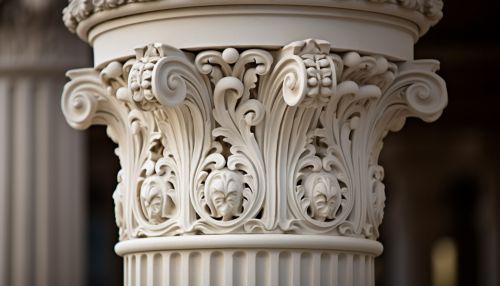Ionic order
Introduction
The Ionic order forms one of the three orders of classical architecture, the other two being the Doric order and the Corinthian order. The Ionic order originated in the mid-6th century BC in Ionia, a region in western Anatolia in present-day Turkey. This architectural style is characterized by its distinct features, such as the volutes, the capital, the column, and the entablature.


Characteristics
Volute
The volute is the spiral, scroll-like ornament that forms the basis of the Ionic order. The volute was initially designed to be a stylized representation of the natural forms, such as animal horns or the waves of the sea. It is the most distinctive characteristic of the Ionic order, setting it apart from the Doric and Corinthian orders.
Capital
The capital in the Ionic order is characterized by the presence of volutes. The capital is typically ornamented with egg-and-dart detailing between the volutes. The design of the capital in the Ionic order is significantly more complex than in the Doric order, but less elaborate than the Corinthian order.
Column
The column in the Ionic order is usually fluted with 24 grooves; however, the number can vary. The column stands on a base, which separates it from the stylobate (the top step of the crepidoma, the stepped platform on which colonnades of temple columns are placed). This is a major difference from the Doric order, which does not typically include a base for the columns.
Entablature
The entablature in the Ionic order is divided into three horizontal sections, each with distinctive features: the architrave, the frieze, and the cornice. The architrave is typically divided into three bands with the central band projecting outward. The frieze may be plain or decorated with relief sculpture. The cornice has dentils – a row of small blocks – beneath the soffit.
Development and Use
The Ionic order was developed in the mid-6th century BC in Ionia. The first known example of an Ionic column is from the Temple of Hera on the island of Samos. The Ionic order was used in mainland Greece in the 5th century BC, but it was not as popular as the Doric order. The Romans later adopted the Ionic order in their architecture.
Influence and Legacy
The Ionic order has had a significant influence on Western architecture. It was revived during the Renaissance and has been used in various architectural styles since then, including Neoclassical and Beaux-Arts architecture. The Ionic order continues to be used in modern architecture, demonstrating its enduring appeal and influence.
